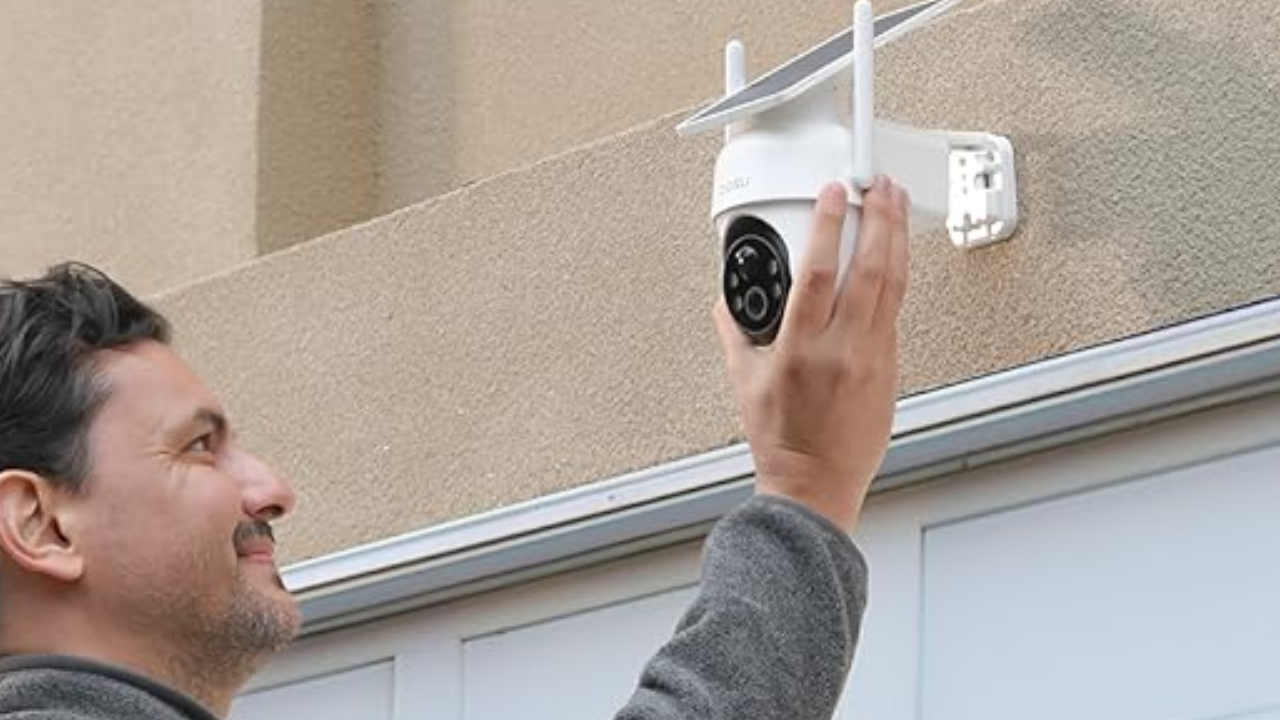Solar-powered outdoor security cameras are a productive and savvy solution for checking private and industrial properties. Those cameras make use of solar energy, transformed using photovoltaic panels, to power their operations. This renewable electricity source makes them best for locations where traditional energy sources are impractical or unavailable. High-performance sun panels seize daylight to charge internal batteries, offering continuous operation even at some stage on cloudy days or at night.
This capability enhances their reliability and reduces dependence on outside electricity grids, aligning with your interest in sustainable-era solutions. Overall, solar powered outdoor camera offer a sturdy combination of environmental sustainability, cost-effectiveness, and operational reliability, making them a favorite desire for boosting belongings security while minimizing ecological impact.
Essential Security Tips For Optimizing the Use of Solar-Powered Security Cameras
The usage of solar-powered security cameras can be high-quality for faraway locations or areas in which regular power supply is a challenge. By following these suggestions, you may improve the effectiveness and toughness of your sun-powered protection cameras, ensuring dependable surveillance even in remote or off-grid locations. Here are a few recommendations to optimize their use:
Optimal Placement of Cameras and Solar Panels
Position cameras at access factors and high visitor areas, ensuring they may be excessive enough to discourage tampering whilst capturing clean footage. Deploy sun panels in locations with the most sunlight publicity, ideally south-dealing, and alter the tilt angle to shape your latitude for best performance. Avoid obstructions, which include bushes or homes, that would cast shadows on the panels. This strategic placement ensures dependable energy for the cameras and maximizes their effectiveness in monitoring your own home.
Regular Maintenance
Often, clean camera lenses with a gentle, dry cloth to ensure clean photos and take a look at housings for wear and tear to prevent moisture ingress. For sun panels, do away with dirt, leaves, and snow with the use of a gentle brush or damp fabric. Look at the wiring and connections to make sure they are comfortable and free from corrosion. Periodically test the fitness of digital camera batteries, replacing them as wished, and keep in mind extra electricity backups for continuous operation throughout prolonged cloudy intervals.
Efficient Power Management
Frequently test camera batteries for fitness and update them as wished. Enforce strong backups, like rechargeable battery packs, for non-stop operation during cloudy intervals. Alter motion detection sensitivity to reduce fake alarms and conserve battery life. Schedule recordings throughout peak pastime hours instead of continuously. Make certain solar panels are easy and unobstructed to maximize power series, and consider the use of power-efficient settings and capabilities for your cameras to similarly optimize power usage.
Enhancing Connectivity and Coverage
Make sure there is sturdy wireless signal energy at camera locations by using wifi extenders or mesh networks. If viable, use Ethernet cables for an extra stable connection. Set up cameras so their coverage areas overlap slightly to eliminate blind spots. Make use of cameras with a wide field of view to cover larger areas with fewer devices. Often, replace firmware and software to maintain premier overall performance and security, and adjust digicam angles to ensure comprehensive monitoring.
Monitoring and Alerts
To optimize using sun-powered safety cameras, employ remote tracking apps or software programs to oversee camera feeds and battery stages from everywhere. Set up alert structures to inform you of low battery tiers or maintenance necessities promptly. Using cloud storage for video recordings ensures record integrity and prevents loss. Those measures enable proactive management of digital camera capability, making sure reliable surveillance abilities even in faraway locations or at some stage in durations of limited sunlight.
Data Security and Access Control
Statistics security and access management Use sturdy, precise passwords for camera access and change them often. Permit two-factor authentication (2FA) for an extra safety layer. Make certain video footage is stored securely with encryption, whether on local storage or inside the cloud. Encrypt the transmission of statistics between cameras and devices to prevent interception. Regularly replace camera firmware to patch safety vulnerabilities. Restrict access to camera feeds and settings to authorized personnel only, and monitor admission to logs for any suspicious activity.
Weather and Environmental Considerations
Choose cameras with a high IP rating (IP65 or better) for water and dirt resistance. Ensure they can function within the temperature range usual for your vicinity. In hurricane-susceptible areas, cozy cameras and sun panels with extra mounting hardware, like typhoon straps. Set up sunshades over cameras and panels to save you from overheating. Regularly investigate and keep weatherproof seals to prevent moisture ingress and defend against harsh environmental conditions, ensuring reliable operation year-round.
Conclusion
By following these recommendations, you may optimize the performance and security of your solar-powered safety cameras. Right placement, ordinary upkeep, green strength control, more advantageous connectivity, strong information protection, weatherproofing, and leveraging superior capabilities all contribute to a comprehensive and effective security device. Sun-powered cameras are a high-quality preference for sustainable and reliable surveillance, and with the proper techniques, you may maximize their benefits to defend your property effectively.

